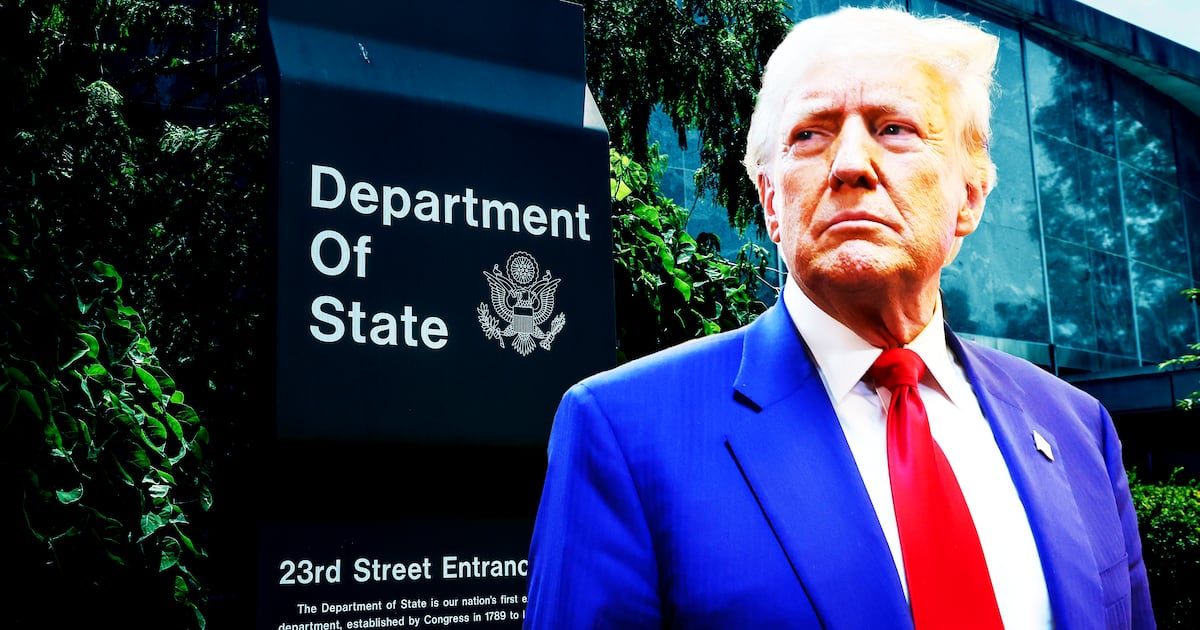Philip K. Howard is chairman of Common Good and author of The Rule of Nobody, just out in paperback.
Pretty much everyone supports rebuilding America’s decrepit infrastructure: environmentalists, labor, business, and the public. True, funding is bogged down this year by partisan resistance to raising the gas tax to replenish the Highway Trust Fund. But the investment is so productive that the money has to be found. According to Moody’s, new infrastructure would return at least $1.44 for each dollar invested.
There’s one rub: Even with funding, no government body has the ability to approve the work or to build it in a commercially reasonable way. Red tape is so dense that even obvious fix-it projects require years of review. Raising the roadway of the New Jersey-to-New York Bayonne Bridge, for example, was a project with almost no environmental impact, because it used the bridge’s existing foundations and right of way. But it still required 47 permits from 19 government agencies, and a 5,000-page environmental assessment.
National priorities, such as the $800 billion stimulus plan in 2009, immediately run aground on the accumulated bureaucracy. That’s why only 3.6 percent of the stimulus got spent on transportation infrastructure. Bureaucratic delay also gives politicians little incentive to fund projects—the link between new taxes and new jobs is too attenuated. When killing funding for a proposed rail tunnel under the Hudson, New Jersey Governor Chris Christie quipped: Why should I spend money on a project my predecessor announced and my successors will cut the ribbons on?
Red tape this dense is a problem of governing philosophy, not organizational efficiency. Modern government is organized to avoid giving anyone authority to make a decision. Balkanizing decisions among multiple departments is how we try to make sure every interest is satisfied. A typical project requires approval from a dozen or more government departments, at federal, state, and local levels. Each department considers itself the keeper of the flame, and, like a special interest, clings to its concerns notwithstanding countervailing public interest elsewhere. Applicants often find themselves caught in regulatory cross-fire, as, say, the Corps of Engineers battles against the EPA. Getting an infrastructure permit requires a process akin to negotiating an international treaty.
Efforts to accelerate approvals ignore the underlying defect: that multiple decision-makers almost always cause paralysis. Recent streamlining initiatives include a “permitting dashboard” and new inter-agency committees charged to work things out. The 2012 “Moving Ahead for Progress” transportation law included 30 pages of new procedures designed to accelerate approval. Therein lies the problem: All it accomplished was adding more mandatory meetings. A project gets bogged down as soon as there’s a disagreement. “Nothing is impossible,” as one pundit put it, “until it’s sent to a committee.”
What’s needed are clear lines of authority. Congress should consolidate responsibility for infrastructure decisions in three ways:
1. Give an environmental official the authority to decide when there’s been enough environmental review: “Oh, you’re just repairing the bridge? Just give a short report on the effects of construction.” That’s what other, greener countries such as Germany or Canada do. There’s no need to trust the particular official; give a higher official who is politically accountable authority to second-guess decisions. But lawsuits over environmental review statements must be barred except for credible claims of bad faith. Most of the agonizing detail of American environmental review comes not in dealing with important issues but in turning over every pebble, often to “prove” in litigation that no conceivable detail was overlooked. The goal of environmental review is to describe material impacts, not to obscure important issues in thousands of pages of trivia. Environmental review on major projects should be completed in two years or less, not (often) 10 years. And this change could be made simply, because the president by executive order could give authority to an environmental official to draw the line on environmental reviews. Limiting litigation will require congressional action.
2. Replace the grueling gauntlet of multiple permits with a “one stop shop.” One government agency should be designated by the White House to give final approval for each federal project. The designated agency, not the applicant, should have the responsibility to coordinate with other government entities. This is as radical as it is practical. It means that a federal agency will typically preempt state and local entities on interstate projects. Similarly, a governor should designate one state agency to take charge for intrastate projects. This requires Congress to enact a law authorizing one agency, selected by the President, to make final permitting decisions.
3. Give contracting flexibility to the agency in charge of construction. Procurement law should be reorganized around individual responsibility instead of bureaucratic compliance. Rigid procurement law, driven by fear of favoritism, has resulted in its evil twin—a convoluted bureaucracy that is readily manipulated by bad contractors. Specifying every contract detail in advance, for example, typically results in costly change orders and bureaucratic delay. Studies of government corruption conclude that sunlight, not bureaucracy, is the best disinfectant of favoritism and fraud. Congress should authorize pilot projects to experiment with more flexible models of contracting, with oversight by outside business boards to ensure commercial reasonableness.
The myth of modern government is that replacing human responsibility with detailed rules is synonymous with good government. But “a government ill-executed, whatever the theory,” Alexander Hamilton observed, “must be in practice, a bad government.” Water pipes in America’s cities are more than 100 years old. Highways and bridges are decrepit. Power lines in America are so antiquated that they waste 7 percent of electricity—the output of 200 coal-burning power plants. Why can’t we rebuild them? The Obama administration concluded it needed approval of 231 state and local regulators to rebuild the national power grid.
The opportunity here is transformative: America can build twice the infrastructure in less than half the time and employ almost 2 million Americans if it can muster the political will to modernize a few laws. Don’t rewrite the bureaucracy; that would take decades. Just supersede it with clear lines of authority. Everyone wins: Modernizing our infrastructure would enhance American competitiveness and create a dramatically greener environmental footprint. The downside is also readily visible: a paralyzed government that drags down the American economy by its inability to make common choices. The only way forward is to give practical authority to officials to make the needed decisions.





